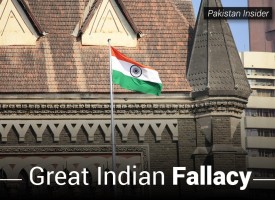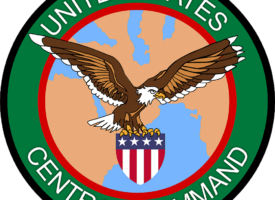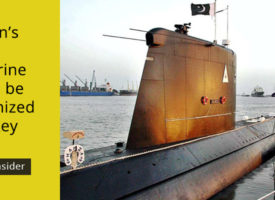After a prolonged period of drastic reduction in major terrorist attacks, Pakistan is again bleeding. Terrorists associated with the Pakistan Taliban’s (TTP’s) Tariq Geedar group, headed by Umar Mansoor alias “Naray (Slim)”, claimed responsibility for yet another brazen attack on an educational institution. The Bacha Khan University (BKU) in Charsadda was attacked on the morning of January 20 by a group of killers who looked almost the same age as the students they targeted. Earlier in December 2014, the same splinter group had killed more than 140 students at the Army Public School (APS) in Peshawar.
The attack on APS Peshawar pushed Pakistan’s national leadership to promulgate the 20-point National Action Plan (NAP) to execute Intelligence-Based Operations (IBOs) and Counter Terrorism (CT) operations across the length and breadth of the country. Complimented with the approval by parliamentarians to set up emergency military courts for speedy trials of terrorists via the 21st Constitutional Amendment, it was hoped these comprehensive measures would improve the situation once and for all. It was senseless to think so.
Consider this; although the civil-military armed forces and intelligence agencies have been trying their best to uproot sleeper cells and hideouts across the country, their efforts merely buy time. CT efforts by principle are executed only when there is a national consensus against terrorism. Until and unless there is a collective national will to confront this menace, killing/arresting militants will not help.
While it is true that all major political parties and stakeholders announced support for more intense CT operations, what we conveniently forget is that a particular lobby within Pakistan’s religious establishment objected on the very mention of religion being associated with categories of terrorism. The refusal to acknowledge, let alone accept, that perverted interpretations of religion are used to brainwash feeble minds into radical extremism is a testament to the long road Pakistan has yet to walk.
The more we allow hate mongers to operate with ease, the more fingers will be raised on the credibility of CT operations.
Some of Pakistan’s leading religio-political parties threatened of ‘severe consequences’ if madrassahs (seminaries) were brought under the limelight. Observers at the time pointed out how the religious clergy representing major schools of thought called the shots and had their own views on the country’s security concerns. This divergence in thought and perspective can be seen in how one sect derides the other, considers itself free of all wrongdoings and ultimately ends up making a joke of efforts to create national harmony.
This mishmash of narratives on what is extremism i.e. fuel for fire (terrorism) has confused our national-level policy making capabilities. More alarmingly, thanks (not) to the 18th Constitutional Amendment, complete provincial autonomy has created a severe disconnect with the federation in Islamabad. Each province has its own Home Ministry with uncertain degrees of cooperation with the Interior Ministry in Islamabad.
Sections 20 and 34 of the National Internal Security Plan 2014-18 envisage the creation of a national narrative against various forms of threats, including extremism. Section 56 even mentioned that international cooperation would be undertaken to counter terrorism and extremism. This, in effect, meant that Pakistan could communicate concerns with ideological hate-sponsoring countries such as Saudi Arabia, Iran and India. But alas, National Counter Terrorism Authority (NACTA), the organization primarily tasked with timely implementation of the plan, has been dormant since years. The APS attack forced Pakistan’s leadership to huddle together and formulate a concise NAP. It is also facing several obstacles.
The most serious challenge for Pakistani authorities is to develop a national narrative against extremism. De-radicalization efforts are one component of rehabilitation efforts. Pakistan Army is already operating various centres to de-radicalize young boys indoctrinated into hate-based teachings which promote killing innocent men, women and children.
De-radicalization and Counter Violent Extremism (CVE) are two different phenomena. The latter requires a well thought out strategy on how to create and implement a narrative which not only discourages but effectively counters vitriolic ideologies. These are efforts which require Pakistani intellectuals, scholars, social scientists, sociologists and psychologists to gather together and hold consultative meetings with the civilian government to chalk out a National Counter Extremism Narrative. Whether or not religious clerics should be involved in such efforts remains to be discussed, because so far influential lobbies from all sects cannot seem to come on one page against terrorism. They have too many ‘ifs’ and ‘buts’ which can hamper or jeopardize such strategic initiatives.
The Government of Pakistan should form a National Commission on Counter Extremism to bring experts from all the above-mentioned sections of society in its fold and give them an ultimatum to devise a comprehensive national narrative against extremism (political, ethnic, religious, sectarian) within a specified deadline. The following issues should be addressed:
• What is the definition of extremism?
• What are the various types of extremism?
• What are the primary sources of extremism?
• What are the secondary sources of extremism?
• Who are the drivers of radical thought?
• What are the linkages between extremism and terrorism?
• What steps can be taken to counter extremist thought and influence?
• How can a national narrative be formed, keeping in view the diversity of religious/sectarian, political and ethnic groups in Pakistan?
• How can common grounds for counter extremism be sustained and upgraded?
• What tools/mediums can be used to encourage and promote the execution of CVE efforts?
• How will checks and balances (accountability) be maintained to evaluate counter extremism efforts?
• How can counter extremism, in particular CVE efforts, complement the ongoing CT operations?
Point No. 5 of NAP says that the state will “counter hate speech and extremist material”. On the public front, no such initiatives have come to light. Will the federal government buck up to take the initiative before it’s too late? Because unless that happens, we will continue to witness further bloodshed (God forbid).
Young men and women who are deviously radicalized by hate preachers are merely products (practical actors) of the poisonous teachings they receive. Their source of knowledge i.e. extremist preachers (roots) are left untouched, most of them still freely roaming around the country, giving provocative hate speeches, publishing hate literature full of distorted content and organizing seminars/rallies centred around religious/sectarian, political and ethnic hate.
As can be seen, “hate” is the driver of all this mess. The more we allow hate mongers to operate with ease, the more fingers will be raised on the credibility of CT operations. Because even though Pakistan’s civil-military security apparatus is competent enough to deal with the menace of terrorism, all sincere efforts will prove futile unless the root causes of the conflict are dealt with.









I fully agree with author what ever suggestion he has put forward to save the country from growing mence of terriosm .people of pakistan need to put there difference aside epically political parties decision makers need to get support of religous clerics they are the people who can play a pivotal role in counter terriosm compagain